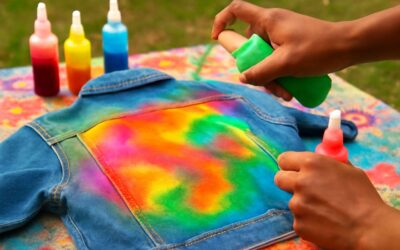Whether you’re an expert hand painter or just beginning, clothing fabric paint is a great way to create a one-of-a-kind piece of art. Unlike acrylic or watercolor paints, these paints are designed to be used on cloth, and they’re usually heat set with an iron to make them permanent. The best clothing fabric paint can be applied with brushes, sponges, or stamps, and some even come in glitter and metallic varieties to add extra flair to your creation.
There are many different brands of clothing fabric paint available, so you’ll need to find the type that works best for your project. Consider the color, weave, and texture of the fabric you want to work with as well as how permanent you’d like the paint to be. For example, if you’re creating a t-shirt or other soft garment, you may want to choose a fabric paint that is machine washable so it won’t fade or peel after washing. If you’re creating something with a more rigid material, such as denim or canvas, you’ll probably need to use a puff paint finish that will give the fabric a raised appearance.
The best clothing fabric paint will also differ in finish and opacity. Some will offer a matte finish, while others are more glossy or pearlescent. You’ll also find a wide variety of colors to choose from, with some being more opaque than others. If you’re unsure of what type of finish or opacity you need, consider using stencils on your first few projects until you get a feel for how the paints perform.
Before starting your project, it’s important to pre-wash the fabric you plan on working with. Most synthetic fabrics are treated with chemicals that might not bind well with your paints. It’s also a good idea to lay down a piece of cardboard or thick paper underneath your fabric to prevent paint from bleeding onto your work surface.
When you’re ready to start, place your fabric on top of the cardboard and secure it with fabric pins or tape to keep it in place while you paint. Before applying the paint, it’s a good idea to sketch out your design on a piece of paper to ensure you get everything right before beginning the painting.
Depending on the type of paint you choose, it may take several coats to fully cover your fabric with color. Be sure to wait for each coat to dry before adding another, and be careful not to apply too much paint at once. Over-applying fabric paint can lead to brittle or stiff garments.
Once your project is complete, allow it to dry completely before removing the painters tape and running a hot iron over the top of the fabric to heat-set the paint. This will ensure your creation doesn’t chip off in the wash and keeps its shape. Be sure to follow the manufacturer’s instructions for setting the paint. Some require tossing in the dryer, while others must be pressed with heat on the back of the fabric.


0 Comments